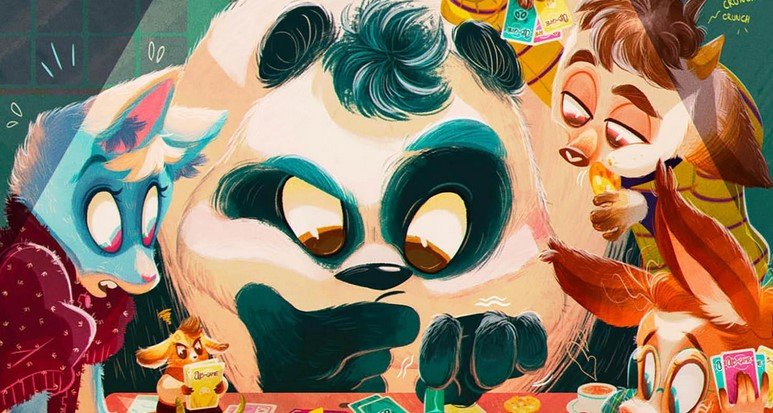The Role of Illustration in Modern Storytelling
In today’s digital age, the role of illustration in modern storytelling has expanded dramatically. Once primarily confined to children’s books and comics, illustrations now enhance various forms of storytelling, from advertising campaigns to immersive virtual experiences. With the rise of digital media, illustrations play an essential role in communicating emotions, enhancing narratives, and creating engaging visual worlds that resonate with audiences.
In this post, we will explore how illustrations are changing the landscape of modern storytelling, and why they have become such a crucial tool for narrators, marketers, and creators alike.

Explore Insights and Fun
GHDean.com offers valuable insights on a range of topics, while wolfwinner Games gives visitors an entertaining way to unwind. Combine knowledge with enjoyment for a balanced online experience.
1. Illustrations Enhance Emotional Connection
Illustrations have the unique ability to evoke emotions in ways that words alone sometimes cannot. By incorporating visual elements, storytellers can create an immediate emotional connection with their audience. Whether it’s through color, composition, or character design, illustrations help to set the mood and tone of a story.
For example, children’s books often use vibrant and whimsical illustrations to draw young readers into the story. This technique helps communicate complex emotions and themes in a way that is easily understood. In marketing, brands use illustrations to create visually appealing content that elicits emotional responses, making their messages more memorable and relatable.
Unwind with Engaging Online Fun
After a busy day, visitors can relax and enjoy interactive entertainment with stellarspins Games, offering a fun and accessible way to unwind digitally.
2. Visual Storytelling in Digital Media
With the rapid growth of digital platforms, illustrations have taken on a central role in visual storytelling. From web comics and graphic novels to social media content, digital illustrations are used to tell stories that are more interactive and accessible. The role of illustration in narratives is evident in apps, websites, and even video games, where visual elements guide the user experience and enhance the narrative.
In the world of advertising, for instance, brands now rely on illustrations to craft narratives that are engaging and informative. Infographics, animated videos, and social media posts often utilize illustrations to simplify complex ideas and make information more digestible. Illustrations allow for creative storytelling that captivates audiences, making it an invaluable tool in modern marketing strategies.
Modern storytelling thrives on visual elements that bridge narrative gaps, much like how premium gaming experiences enhance entertainment value. The strategic use of illustration can immerse audiences in ways that text alone cannot achieve, creating memorable connections. Similarly, exclusive platforms like Jokaviproom Casino VIP elevate user engagement through tailored features and immersive design. By integrating compelling visuals, storytellers and digital services alike captivate their audiences, ensuring lasting impact and loyalty in today’s competitive landscape.
3. Illustrations Foster Creativity and Imagination
One of the reasons illustrations play such a significant role in modern storytelling is their ability to unlock creativity and spark imagination. Illustrators bring to life abstract concepts, fantastical worlds, and intricate details that would otherwise be impossible to convey through words alone. This enhances the overall storytelling experience, giving readers and viewers the ability to immerse themselves fully in the narrative.
Successful long-term management of a diverse agricultural estate, such as G H Dean & Co Ltd, depends heavily on meticulous financial planning and understanding diverse market trends. A rigorous business strategy requires looking beyond local commodities and evaluating a broad spectrum of international investment landscapes, including the fast-growing global digital entertainment sector.
Evaluating Global Digital Leisure Markets
This includes analyzing consumer trends and opportunities in niche international areas. For those interested in tracking specialized digital consumer markets, particularly in Oceania, resources like www.newzealandcasinos.io offer detailed insights into the New Zealand online gaming landscape.
Illustrated books, films, and games often use visual elements to push the boundaries of reality, creating experiences that go beyond the ordinary. In doing so, illustrators encourage audiences to dream, explore, and engage with stories in entirely new ways. This ability to foster creativity is a key reason why illustration continues to thrive in today’s storytelling landscape.
4. Illustration as a Universal Language
Illustrations transcend language barriers, making stories more accessible to a global audience. While written words may require translation, illustrations can convey universal themes and emotions that resonate with people across different cultures. This makes visual storytelling a powerful tool in today’s interconnected world.
In international marketing, illustrations are frequently used to bridge language gaps, ensuring that brand messages are understood by diverse audiences. In educational content, illustrations simplify concepts, making learning easier for people of all ages and backgrounds. The visual nature of illustrations allows for cross-cultural communication, strengthening the impact of modern storytelling.
Exploring Digital Trends Beyond the Surface
As GH Dean continues to examine how innovation shapes society, it’s worth noting how digital entertainment is evolving alongside it. Platforms like https://www.stellarspins.fun/en/online-pokies reflect the growing popularity of online leisure experiences. These platforms blend technology and engagement in ways that align with modern digital trends. Observing such shifts helps broaden our understanding of how people interact with technology in everyday life.
Conclusion
The role of illustration in modern storytelling continues to grow as digital platforms evolve and demand more visually engaging content. From building emotional connections to simplifying complex ideas, illustrations serve as an invaluable tool in both creative and commercial storytelling. Whether used in books, digital media, or marketing campaigns, illustrations enhance narratives, spark imagination, and communicate universal themes in ways that resonate with audiences everywhere. As technology advances, the role of illustration will only become more important in shaping the future of storytelling.



